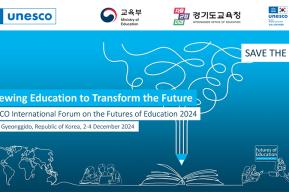With over 1.3 million migrants (as of 31 December 2021), making up 12.4 per cent of its population, and over 90,000 new immigrants arriving in 2021 alone, Sweden regularly tops the list of European countries in terms of refugee numbers as a proportion of its population. As such, the country has made great strides in promoting the benefits of digital tools and support systems to enable migrant and refugee learners to integrate and thrive in their new communities. One of the country’s notable programmes, Språkkraft, is featured in the new publication by the UNESCO Institute for Lifelong Learning (UIL), From Radio to Artificial Intelligence: Review of Innovative Technology in Literacy and Education for Refugees, Migrants and Internally Displaced Persons.
Niss Jonas Carlsson, the founder of Språkkraft, was quick to recognize the power of technology in enabling accessible and efficient language learning solutions.
Having had many years of experience in developing digital platforms, I saw an opportunity to democratize learning by directly reaching refugees and migrants through engaging multimedia-based language tutorials.
To do this, Språkkraft signed a cooperation agreement in 2016 with Sveriges Television AB (SVT), Sweden’s largest public service media corporation, to launch the SVT SpråkPlay (‘language play’) app – teaching migrants the Swedish language in an immersive and portable video format. As a free-to-use platform, the SVT SpråkPlay app is available on the internet and can be accessed by tens of thousands of users simultaneously, without the need to facilitate physical classrooms. In the five years since its launch, it has offered accessible learning to more than 590,000 users and supported more than 1 million hours of cultural and language learning.
Speaking about the importance of learning from television shows and news, teacher and SVT SpråkPlay app instructor Mr Johan Sköld of Forshagaakademin, an upper secondary and vocational college based in west central Sweden, says,
I often tell my students how important it is to learn their new culture and language by watching films, TV programmes and news. I try to find things that I think may interest them and I encourage them to watch the shows in their own time as well.
The SpråkPlay app features popular Swedish television shows, animated tutorials and news media as language-learning support. As a result, it has had a significant social-cultural impact on its users, informing them about Sweden’s culture, values and norms.
Azam, an Iranian woman now living in Sweden, lauded the app’s role in supporting her social integration:
When you just arrive in a country, it is hard to socialize without understanding what people are talking about. With this app, you can start to learn the language and a little about the culture. It is like a friend for strangers who are new to this country. Now I have a self-confidence and I can manage at work and in daily life.
The app not only uses mass media and entertainment to teach Swedish language and culture but also to share information that might be helpful to new arrivals in the country. ‘In the app, there are movies and documentaries about refugees and strangers, which made me more motivated to learn,’ continued Azam.
The standout feature of the SVT SpråkPlay app is the self-learning user function, empowering learners to progress at their own pace. The SVT SpråkPlay app is not a traditional teaching tool in the sense that it does not follow any specific pedagogical method. Instead, learners themselves decide how they would best like to use the app to learn Swedish, e.g. by watching a television show, listening to a song, reading a news article, and much more. An initial placement test provides a baseline for users to start from, and learners are thereby guided to complete a series of tasks designed to teach them about Swedish language and culture.
One challenging part for the students, as well as for me, is to realize that they are in control of their development in their new language. However, the online learning gives the students the possibility to learn more and faster.
Mr Sköld’s point on the speed of learning is echoed by student Ali Adam, who comments on how quickly he learned by using the app:
It took me seven months to learn [Swedish] with the app. I can talk in Swedish about several subjects, but I understand more than what I can speak.
While the app is largely intended for self-study by single-learner users, language instructors have also found it to be an efficient teaching tool. Instructors have been employing a ‘flipped classroom’ approach, assigning learners a task to work on before they attend class, and subsequently examining it during class. As the app offers the option of closed captions, users can access a ‘ProActive Personal Dictionary’, which allows them to tap on a word at any time to access translations or contextual grammar explanations. This further enables learners to build their vocabulary and improve their listening comprehension.
Språkkraft receives funding from the government, the private sector, NGOs and through partnerships with public entities. In 2018, SpråkPlay won Best European Online Project of the Year at the Prix Europa, Europe’s largest annual tri-media festival and competition. Its success in bringing stakeholders together to integrate migrant and refugee communities into Swedish society has been an insightful learning experience for countries across Europe and worldwide, demonstrating the opportunities offered by innovative approaches to media and technology.
In recognition of its success in Sweden, Finland’s broadcasting giant Yle launched a SpråkPlay service in 2020 called ‘Yle Kielikoulu’ to teach Finnish. There is also a pilot for use in Switzerland. With additional funding, the programme is looking to expand into other geographic and/or linguistic regions.
Further information
- Case study connected in the UIL Literacy database
- UNESCO Institute for Lifelong Learning’s study ‘From radio to artificial intelligence: Review of innovative technology in literacy and education for refugees, migrants and internally displaced persons’.
- UNESCO Institute for Lifelong Learning's publication









